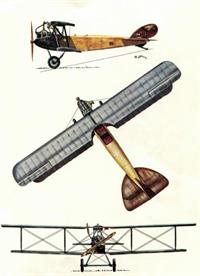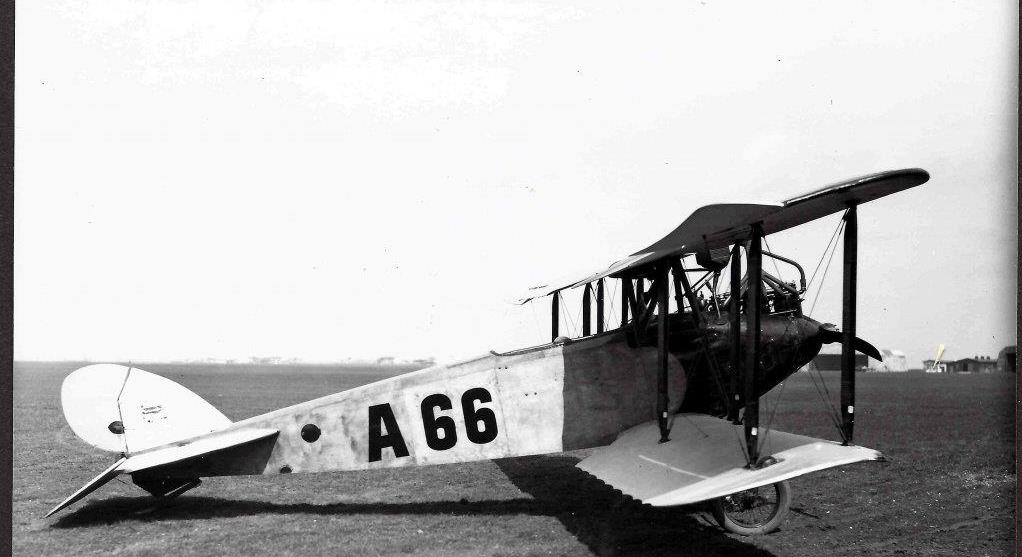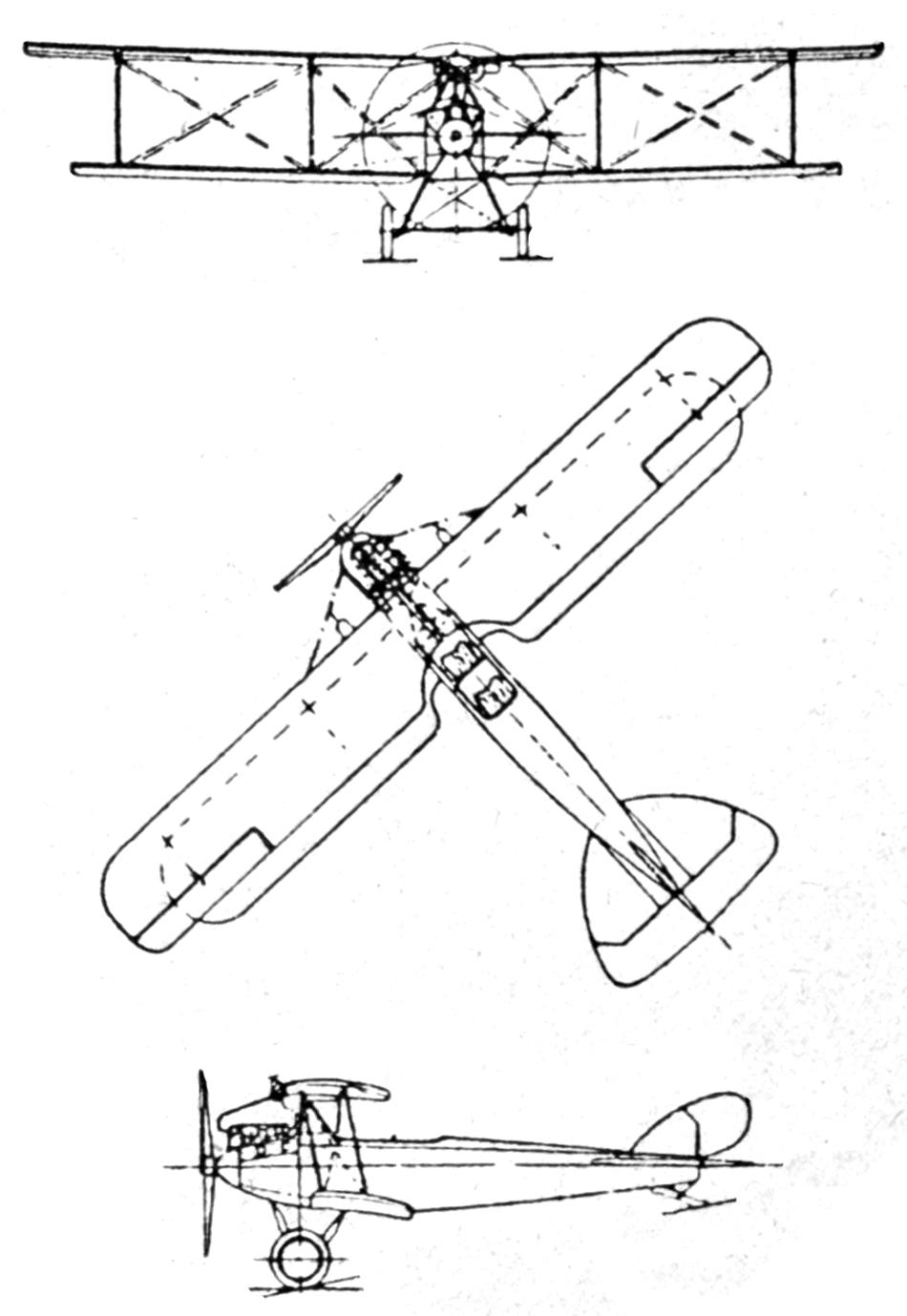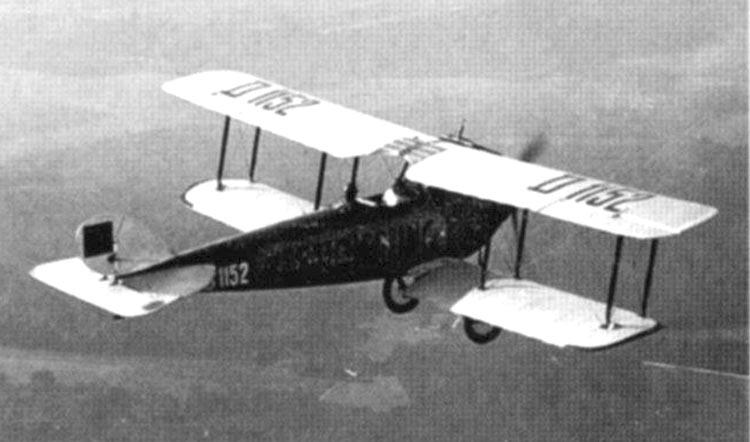A Raab-Katzenstein RK 6 biplane - a 1928 copy of the L.V.G. B.III [Germany, 1928]
It's like looking in at the war period but in reality this picture was taken between 1928 and 1932 and shows a brand new built Raab-Katzenstein RK 6 biplane with civil registration D-1366.
Raad-Katzensten built a few new L.V.G. B.III biplanes and named them RK 6. Outwardly they are indistinguishable from the original L.V.G. B.III.
| Type |
Two seat sportplane, new built LVG B III |
|
| Engine |
1 Daimler D I |
1 Daimler D II |
| Dimensions |
Length 7,89 m, height 2,89 m, span 12,51 m wing area 32,15 m2 |
| Weights |
Empty 700 kg, flying weight 980 kg, fuel 54 kg, oil 10 kg, pilot 80 kg, payload 136 kg |
| Performance |
Max. speed 110 km/h, cruising speed 100 km/h, service ceiling 3800 m, range 250 kmclimb 3,0 m/sec., landing speed 60 km/h
climb |
Max. speed 120 km/h, cruising speed 100 km/h, service ceiling 3800 m, climb 4,2 m/sec., range 250 km, landing speed 60 km/h |
| Type |
Werk.Nr |
Registration |
History |
|
24 |
D-975 |
Raka, Kassel. Withdrawn from use April 1932 |
|
25 |
D-1032 |
Leipziger Verein f. Luftfahrt. Destroyed May 1928 |
|
28 |
D-1061 |
Verein für Luftfahrt Dortmund. Cancelled July 1938 |
|
29 |
D-1070 |
H. Fink, Hochheim. Zirkus Show, Landsberg. Burnt Sept. 1929 |
|
52 |
D-1156 |
Dr. Nicolai, Ostheim. Withdrawn from use April 1932 |
|
53 |
D-1152 |
Verein Für Forderung des Flugwesens, Cottbus. J. Schuhmacher, Wiesbaden |
|
54 |
D-1260 |
Verein für Forderung des Flugwesens, Cottbus. Destroyed Febr. 1932 |
|
55 |
D-1273, A-66 |
Fliegerschule Bork. Sold to Austria April 1929 |
|
56 |
D-1366 |
April 1928. A. Thoma, Zwickau. Destroyed Oct. 1932 |



In order to have a suitable, already proven, training aircraft available for the planned flight school of the newly founded Raab-Katzenstein aircraft factory as a bridge until the type approval of the factory's own training aircraft RaKa RK 2, a replica of the LVG B.III was quickly realized in the second half of 1926. For the replica, Raab-Katzenstein Flugzeugwerk GmbH acquired the reproduction rights of the DLFW B.I from Deutsche Lloyd Flugzeugwerke GmbH (DLFW), which had been created in 1923 as a revised design of the World War II training aircraft LVG B.III of the Luftverkehrsgesellschaft (LVG).
A first, largely unchanged replica of the DLFW B.I with a Mercedes D-II engine was completed in September 1926 as a one-off for the flight school in Waldau and registered with the registration number D–975. Based on initial experience in training, Kurt Katzenstein and Paul John Hall revised the DLFW-B.I design in collaboration with the German Aviation Research Institute, which, among other things, required the installation of a firewall. Under the name Raab-Katzenstein RK 6 "Kranich", type approval and series production of five aircraft began in autumn 1926. Another five aircraft were manufactured in late summer 1927.
With the completion of the first RK-2 series aircraft, the RaKa RK 6 were replaced in the flight schools of the Raab-Katzenstein aircraft factory in early 1927. The released aircraft were offered for sale at a unit price of 11,500 (aircraft with repaired D.I) to 18,200 ℛℳ (with brand new replica D-II), depending on the engine with Mercedes D I (used) or Junkers L 7a. Presumably to increase the capacity of the flight schools, another five RaKa RK 6s were built in the late summer of 1927. These were used in factory traffic until the beginning of 1928 and then also sold. No further RK 6s were built.
The flight school opened by RaKa in the autumn of 1926 initially had a Kl I Schwalbe in addition to the first RK 6, on which the three teachers Katzenstein, Fieseler and Wördehoff trained the first eight students. The D–975 was damaged by the student pilot Walter in a crash landing on December 1st. It was repaired, but on February 4th, 1927, another crash occurred with it, in which the student Paul Küppers was killed and the aircraft was very badly damaged, including the complete destruction of the nose section and the tearing off of the wing. Nevertheless, it was repaired again.
The D-975 prototype, built according to the original DLFW plans, was not sold. It remained in the factory's possession and was used for a long time as a multi-purpose aircraft for test flights. Among other things, the D-975 was used as a tow aircraft in the first RaKa aircraft towing tests in 1927 and was often seen at air shows in 1927/28 in the "tow train of the future" before it was replaced by the more modern RaKa RK2.
After being used in the RaKa flight schools, the remaining nine RK 6s were mainly taken over by flying clubs for their training purposes. Due to their good slow flight characteristics, some RK 6s were also used by aerial acrobats and parachutists[6]. The slowly circling aircraft with large wings were also suitable for advertising flights. The RaKa RK 6s were quickly retired, however. By the mid-1930s, no RK 6s were registered in Germany.
The RK 6 was a braced, two-stem and staggered biplane of wooden construction. The fuselage consisted of a plywood-clad frame with ash spars, the engine in the nose was mounted on a wooden trestle. The wings were covered with fabric and consisted of two wooden box spars and plywood ribs. The wooden tail unit was covered with plywood like the fuselage and consisted of the cantilevered horizontal stabilizer with the continuous elevator and the equally cantilevered vertical stabilizer with balanced rudder. The RK 6 had a rigid main undercarriage with a continuous axle and a skid at the rear.







